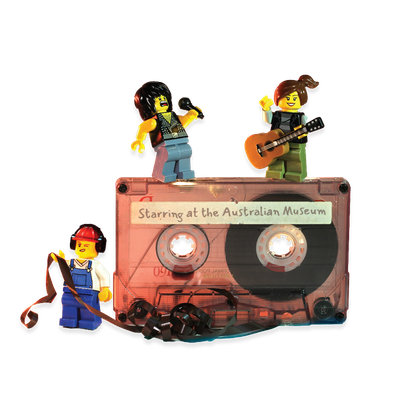Your search returned 12438 results
By Page Type
By Tag
- fish (966)
- blog (696)
- fishes of sydney harbour (401)
- First Nations (298)
- Blog (236)
- AMRI (169)
- archives (164)
- Eureka Prizes (146)
- Aboriginal and Torres Strait Islander (135)
- insect (126)
- Ichthyology (124)
- geoscience (109)
- minerals (102)
- climate change (99)
- podcast (94)
- Fish (91)
- Anthropology (89)
- International collections (80)
- Minerals Gallery (78)
- wildlife of sydney (78)
- Labridae (77)
- frog (74)
- gemstone (70)
- photography (66)
- history (63)
- Mollusca (60)
- gem (59)
- staff (59)
- Birds (56)
- Gems (56)
- Indonesia (56)
- education (55)
- shark (55)
- AMplify (54)
- people (53)
- earth sciences (50)
- exhibition (50)
- past exhibitions (50)
- Gobiidae (48)
- sustainability (46)
- Pomacentridae (45)
- Serranidae (44)
- lifelong learning (42)
- science (42)
- Earth and Environmental Science (41)
- Syngnathidae (41)
- Ancient Egypt (40)
- Bali (40)
- bird (40)
- dangerous australians (40)
-
Metamorphism
https://australian.museum/learn/minerals/shaping-earth/metamorphism/The word metamorphism comes from Greek and means 'change of form'. Metamorphic rocks are pre-existing rocks whose mineral composition and/or texture has been changed by processes within the Earth.
-
The hairy spider
https://australian.museum/learn/animals/spiders/the-hairy-spider/Find out how hair helps spiders sense their world, get a grip and protect themselves.
-
Antarctic habitats
https://australian.museum/learn/teachers/learning/antarctic-habitats/Many animals live in and visit Antarctica and the islands around it. Antarctic habitats include pack ice, mountains and the surrounding seas.
-
Woodland habitats
https://australian.museum/learn/teachers/learning/woodland-habitats/Woodlands are places where the trees are spaced apart with heath and grassland in between. They often have open grassy spaces as well as clumps of trees, rocks and bushes.
-
Virtual autopsy
https://australian.museum/learn/teachers/learning/virtual-autopsy/Follow a human autopsy process from start to finish including an external examination, opening the body, viewing internal organs, removing the organs and weighing them, removing the brain, replacing all organs and closing the body.
-
Prevention of Plague: Instructions to Householders, issued by the NSW Department of Public Health, 1900
https://australian.museum/learn/collections/museum-archives-library/research-library/prevention-of-plague/Read a historic pamphlet issued during the 1900 bubonic plague outbreak in Sydney
-
AMRI Lifetime Achievement Award
https://australian.museum/get-involved/amri/lifetime-achievement/Discover the Australian Museum Research Institute (AMRI) Lifetime Achievement Awards.
-
What's on at the Australian Museum
https://australian.museum/visit/whats-on/Discover our exciting exhibitions and program of events including Prehistoric Playground for kids.
-
Review of the Australian genus Pentachaeta (Diptera: Heleomyzidae), with descriptions of nine new species
https://journals.australian.museum/mcalpine-2014-rec-aust-mus-665-247264/Review of the Australian genus Pentachaeta (Diptera: Heleomyzidae), with descriptions of nine new species
-
A Faunal Survey of East Australian Rainforests. Studies by the Australian Museum in Mid-eastern and North-eastern Queensland and Northern New South Wales
https://journals.australian.museum/broadbent-1976-published-by-am-0-1132/A Faunal Survey of East Australian Rainforests. Studies by the Australian Museum in Mid-eastern and North-eastern Queensland and Northern New South Wales
-
Discover more
2025 Australian Geographic Nature Photographer of the Year
Special exhibition
Free entry
Now open -
Discover more
Unfinished Business
Special exhibition
Free entry
Now open -
Discover more
Wansolmoana
Permanent exhibition
Free entry
Open daily -
Find out more
Burra
Permanent kids learning space
Free entry
10am - 4.30pm![]()
-
Discover more
Minerals
Permanent exhibition
Free entry
Open daily![]()




